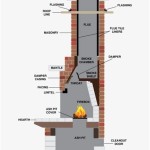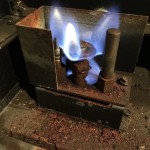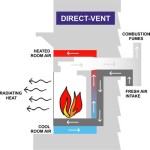Hearth Gate Child Safety For Fireplace
Fireplaces provide warmth and ambiance, but they also pose significant hazards to young children. A fireplace, even when not in use, can be a source of potential burns, falls, and other injuries. Therefore, implementing comprehensive child safety measures around the fireplace is crucial for protecting infants and toddlers. A primary component of these safety measures is the use of a hearth gate.
Hearth gates are physical barriers designed to enclose the fireplace and the surrounding hearth area. They serve as a protective shield, preventing children from accessing the fireplace itself, hot surfaces, and any sharp edges. The selection, installation, and proper use of a hearth gate are essential for ensuring its effectiveness in safeguarding children from fireplace-related dangers. This article will explore the key considerations for hearth gate selection, installation, and usage, focusing on how to create a safer environment for young children around fireplaces.
Selecting the Appropriate Hearth Gate
Choosing the right hearth gate is the first step in establishing a secure fireplace area. Several factors must be considered to ensure the gate effectively meets the specific needs of the home and the protection of the child. These considerations include the size and shape of the hearth, the gate's construction materials, its adjustability, and its mounting options.
Hearth Size and Shape: The dimensions and configuration of the hearth are primary determinants of the appropriate hearth gate. The gate must be large enough to fully enclose the hearth area, preventing access from all angles. Irregularly shaped hearths, such as those with curved edges or large protrusions, may require custom-made or highly adjustable gates. Measuring the hearth accurately before purchasing a gate is essential to guaranteeing a proper fit. Consider the depth of the hearth as well as its width, ensuring the gate extends far enough to keep a child a safe distance from the fireplace.
Construction Materials: Hearth gates are typically constructed from metal, wood, or plastic. Metal gates are known for their durability and strength, often fabricated from steel or aluminum. Wood gates can offer a more aesthetically pleasing appearance but may not be as resistant to heat or physical impact as metal options. Plastic gates, while generally less expensive, may not be suitable for use near high-heat sources due to the potential for melting or warping. The material selected should be non-toxic and free from any lead-based paints or finishes. Regularly inspect the gate for any signs of damage or wear, regardless of the material, to ensure it maintains its structural integrity.
Adjustability and Configuration: Many hearth gates are designed with adjustable sections or panels, allowing them to adapt to various hearth sizes and shapes. This adjustability is particularly beneficial for homes with non-standard hearth designs. Look for gates with easy-to-use adjustment mechanisms that can be securely locked into place. Some gates feature hinged sections that allow them to be configured in a variety of shapes, such as rectangles, squares, or even custom angles. The adjustability should allow for a snug fit against walls or other fixed structures. Furthermore, consider the ease with which the gate can be opened and closed for adults while remaining secure against access by children. One-handed operation for adults is a desirable feature.
Mounting Options: Hearth gates are typically mounted using either hardware or pressure. Hardware-mounted gates are secured to the wall or surrounding structures with screws or bolts. These gates provide a more permanent and stable barrier, making them suitable for high-traffic areas or when increased security is required. Pressure-mounted gates, on the other hand, rely on friction to hold them in place. These gates are easier to install and relocate but may not be as secure as hardware-mounted options. Pressure-mounted gates should only be used when they can be properly and securely installed between two solid, stable surfaces. For fireplaces, hardware mounting is generally recommended due to the increased safety required.
Proper Installation of a Hearth Gate
Even the best hearth gate will only be effective if it is installed correctly. Proper installation ensures the gate functions as intended, providing a secure barrier against access to the fireplace. The installation process typically involves preparing the mounting surfaces, securely attaching the gate, and verifying its stability and functionality.
Preparing the Mounting Surfaces: Before installing the hearth gate, it is essential to prepare the surfaces to which it will be attached. For hardware-mounted gates, the mounting surfaces should be solid and capable of supporting the weight and stress exerted on the gate. If mounting to drywall, it may be necessary to use wall anchors to provide additional support. For pressure-mounted gates, the mounting surfaces must be clean, dry, and free from any obstructions that could interfere with the gate's grip. Remove any loose paint or wallpaper that could compromise the stability of the gate. Ensure the mounting surfaces are level to avoid uneven pressure distribution, which could weaken the gate's stability.
Securely Attaching the Gate: The method of attachment will depend on whether the gate is hardware-mounted or pressure-mounted. For hardware-mounted gates, follow the manufacturer's instructions closely, using the provided hardware and tools. Ensure the screws or bolts are tightened securely, but avoid over-tightening, which could damage the mounting surfaces or the gate itself. For pressure-mounted gates, carefully adjust the pressure knobs or levers to achieve a snug fit. The gate should be firmly held in place without requiring excessive force. Regularly check the tightness of the pressure knobs to ensure the gate remains secure.
Verifying Stability and Functionality: Once the gate is installed, thoroughly test its stability and functionality. Gently push and pull on the gate to assess its overall stability. It should not wobble or shift significantly. Check the latching mechanism to ensure it operates smoothly and securely. The latch should be easy for adults to operate but difficult for children to open. Simulate attempts by a child to climb or push against the gate to identify any potential weaknesses or vulnerabilities. If any issues are detected, re-adjust the mounting hardware or pressure settings until the gate is fully secure and functional.
Maintaining Hearth Gate Safety
Maintaining the hearth gate is an ongoing process that involves regular inspections, cleaning, and necessary repairs. Consistent maintenance ensures the gate continues to provide a safe and reliable barrier to the fireplace.
Regular Inspections: Conduct routine inspections of the hearth gate to identify any signs of damage, wear, or loosening. Check the condition of the latching mechanism, hinges, and mounting hardware. Look for any cracks, dents, or sharp edges that could pose a hazard. Test the gate's stability by gently pushing and pulling on it. A comprehensive inspection should be performed at least once a month, or more frequently if the gate is subjected to heavy use or potential impact.
Cleaning and Maintenance: Keep the hearth gate clean and free from dust, dirt, and debris. Use a mild soap and water solution to clean the gate, avoiding harsh chemicals or abrasive cleaners that could damage the finish or materials. Lubricate the hinges and latching mechanism as needed to ensure smooth operation. If the gate is made of wood, periodically apply a sealant or varnish to protect it from moisture and prevent warping. Proper cleaning and maintenance will extend the lifespan of the gate and help maintain its safety and functionality.
Repairing or Replacing Damaged Components: Promptly repair or replace any damaged components of the hearth gate. Loose screws, broken hinges, or cracked panels can compromise the gate's structural integrity and reduce its effectiveness. If a latching mechanism is malfunctioning or broken, replace it immediately to prevent children from gaining access to the fireplace. If the gate is severely damaged or worn, it may be necessary to replace the entire unit. Ignoring minor damage can lead to more significant problems and potentially compromise the safety of the child. Always use replacement parts that are specifically designed for the hearth gate to ensure compatibility and proper function.

Wood Stove Gas Hearth Gate G3111g4301 G4311 Friendly Fires

How To Baby Proof Fireplace Important Checklist

Wood Stove Gas Hearth Gate G3111g4301 G4311 Friendly Fires

Babyproof Your Hearth And Fireplace With These Simple Tips Tricks

3 Ways To Baby Proof A Fireplace Wikihow

Wood Stove Gas Hearth Gate G3111g4301 G4311 Friendly Fires

Kidco Hearth Gate

How To Baby Proof Your Fireplace Pa Guide Proofing Toddler

Kidco Custom Fit Auto Close Hearthgate Baby Or Fireplace Gate For Child Safety Black Com

How To Childproof Your Fireplace Baby Proof Sa South
Related Posts








